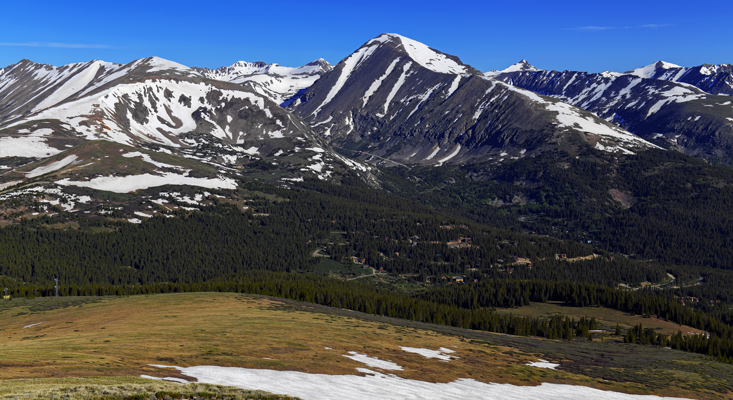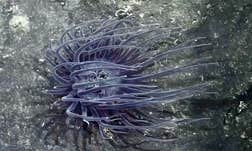Winter is changing its character. Since the beginning of the 21st century, glaciers have been melting at record speed. In Central Asia, they’ve lost approximately one quarter of their volume over the past 50 years. An ice grotto in Switzerland that is creeping down the slope as the Rhône Glacier advances is now covered with white blankets every summer to help preserve it. When a glacier ceases to flow and begins to melt, glaciologists use the term dead-ice, and when dead-ice melts completely, it leaves behind an uneven terrain full of potholes. Depending on their shape and location, these are known as donuts, puckered lips, or kettles. The highest ski resort in the world used to be on the glacier at the summit of Mount Chacaltaya in Bolivia. The glacier, 17,785 feet above sea level, disappeared years ago, and scientists have calculated that glaciers will continue to melt even if humans somehow manage to reduce the amount of greenhouse gases entering the atmosphere.

Investigations confirm that the snow cover in Earth’s Northern Hemisphere is diminishing. In many places, winter is getting shorter and spring is setting in earlier. A well-known saying in France—“If you could sell snow, you’d be rich”—is no longer universally applicable. Shorter winters disrupt many natural processes; they also affect the activities we undertake during the season. Tourists no longer flock to winter resorts when cross-country skiing trails, ski runs, and ski-jumping hills remain undusted by snow—and producing snow artificially is expensive. In some skiing regions, people have started to invest in snow depots, which can provide short-term replenishment, shades of the icehouses of old. The terms estivation of snow and snow farming may soon enter the vernacular. Strategically placed fences collect drifts of snow that keep especially well when you wrap them in a protective layer of sawdust at least 16 inches (40 centimeters) thick, or enclose them in Styrofoam—incredibly, only a quarter of the snow that would disappear under normal conditions melts when these precautions are taken. This is done at many ski resorts, including Davos, Titisee in the Black Forest, and Ruhpolding, Bavaria. Admittedly, it’s not particularly romantic when resort operators have to supplement snow in this way. The term pseudo-snow seems justified, and it’s only a matter of time before skiing will start to seem more like taking a ride in an amusement park than a sport in which participants pit themselves against nature.
Many young people have only heard of periods of deep cold or seen reports of them on television.
The distinction between “natural” and “artificial” is getting increasingly blurred. These days technicians in down suits enter cold chambers to create artificial snow that can no longer be differentiated from natural powder. The process simulates what happens in the clouds: cold air is blown over a trough of warm water, causing crystals to form. Varying the temperatures of the laboratory and the water changes the shapes of the crystals. The powder snow generated in the laboratory is different from the artificial snow generated on the slopes, when snow cannons spray minuscule droplets of water into cold air to freeze and form tiny balls of ice. Artificial snow made this way is denser than natural snow and forms a harder surface. It also thaws up to four weeks later, which affects plant growth. In areas where artificial snow is made with snow cannons, you tend to find species that blossom quickly, because their growing season is shorter.
The rhythm of the seasons represents order in our world: One season enters as another exits. Winter used to have a far greater impact on our daily routine than it does today. Many young people have only heard of periods of deep cold or seen reports of them on television. We watch with fascination and a certain amount of horror as chunks of ice break away in the Arctic.
The people of the circumpolar regions aren’t the only ones noticing that it’s too warm. Animals whose habitats are drastically changing cannot complain, but they migrate to regions unfamiliar to them. The fact that the ice in Greenland and West Antarctica is melting doesn’t simply raise the level of the oceans, but also has repercussions for ocean currents. Climate experts anticipate these changes will lead to an increase in the number of winter storms and cyclones. How can spring still make its powerful effects felt when the preceding season is so mild that plants and animals no longer shut down?
In times past, winter arrived unannounced. It was not unexpected, but without reliable weather forecasts people didn’t know exactly when they would be overtaken by snow and ice. Today legions of people follow the weather reports to learn about the advent of snow a few days in advance, perhaps watching for the best weekend to indulge in their favorite winter sport but giving little thought to stacking wood, rounding up the animals, chopping a hole in the ice for fresh water, or any of the backbreaking chores previously connected with preparing for winter.
Though we have weather forecasts, are we really that much better off than our ancestors who waited for the return of predictable cycles? We can pinpoint when specific weather phenomena will arrive, but the weather’s general timing and intensity are getting increasingly unpredictable.
How can we enjoy the other seasons when we haven’t previously experienced winter in all its asperity?
When will we have to redefine the seasons on a phenological level? The phenological calendar divides spring, summer, and fall into three developmental stages. In the case of spring, changes are particularly noticeable. Recently, April has been demonstrating a pre-summer character, and black-thorn winters, also known as “ice saints” (a last frost before spring, an Indian summer in reverse) completely fail to materialize. Things are going haywire when the dead of winter brings phenomena that herald spring, such as almond trees blossoming—something that was observed in Germany at Christmas time in 2015.
As we dominate winter and tame its effects on us, we must remember that it retains moments of unpredictability that confuse our expectations and habits again and again, independent—at least partially—of climate change. Indications show that there have always been anomalies that did not conform to the pattern, even during the Little Ice Age. So we have Samuel Pepys’s diary entry from January 21, 1661: “It is strange what weather we have had all this winter; no cold at all; but the ways are dusty, and the flyes fly up and down, and the rose-bushes are full of leaves, such a time of the year as was never known in this world before here.” Simply a coincidence? Possibly an exception?
Similar statements have been made on more than one occasion by other reputable observers. In 1782, Thomas Jefferson reported in Notes on the State of Virginia that “snows are less frequent and less deep.” He continued: “They do not often lie, below the mountains, more than one, two, or three days, and very rarely a week. They are remembered to have been formerly frequent, deep, and of long continuance. The elderly inform me the earth used to be covered with snow about three months every year.”
Whenever winter hits and however mild or severe it might be, we must remain cognizant of the fact that winter offers a change of pace, a reduction of the world around us. It can be a period of withdrawal, of reflection and regeneration. If we allow ourselves to embrace it, it can bring us back to a time when people were forced to be more flexible and responsive to the seasons. Maybe we, too, can become more receptive to the small pleasures and wonders that we otherwise perceive only peripherally, if at all?
Slow, quietly falling snow models the style of behavior appropriate for this time of year. The cold season also highlights our limitations and exposes our vulnerability. Shakespeare once wrote: “Winter, which being full of care, makes summer’s welcome thrice more wished, more rare.” Even if winter is no longer the existential challenge it was just a few generations ago, it reveals to us that there is a counterweight to the surfeits of summer. Isn’t it the idea of perpetual summer that is abominable? How can we enjoy the other seasons when we haven’t previously experienced winter in all its asperity?
The seasons are interdependent: the experience of real, unbridled cold and darkness—all part of winterlust—is what lets us relish warmth and light. Albert Camus reminds us of this dialectic of seasonal anticipation with his variation on Shakespeare’s words: “In the depth of winter, I finally learned that within me there lay an invincible summer.”
Bernd Brunner’s work has been published in Lapham’s Quarterly, The Paris Review, and the Wall Street Journal Speakeasy. He is the author of an eclectic array of books, including Birdmania and Inventing the Christmas Tree. His newest book is Winterlust: Finding Beauty in the Fiercest Season.
Excerpted from Winterlust: Finding Beauty in the Fiercest Season, by Bernd Brunner. Published in November 2019 by Greystone Books. Excerpted with permission of the publisher.
Lead image: Dmitrijs Bindemanis / Shutterstock


























